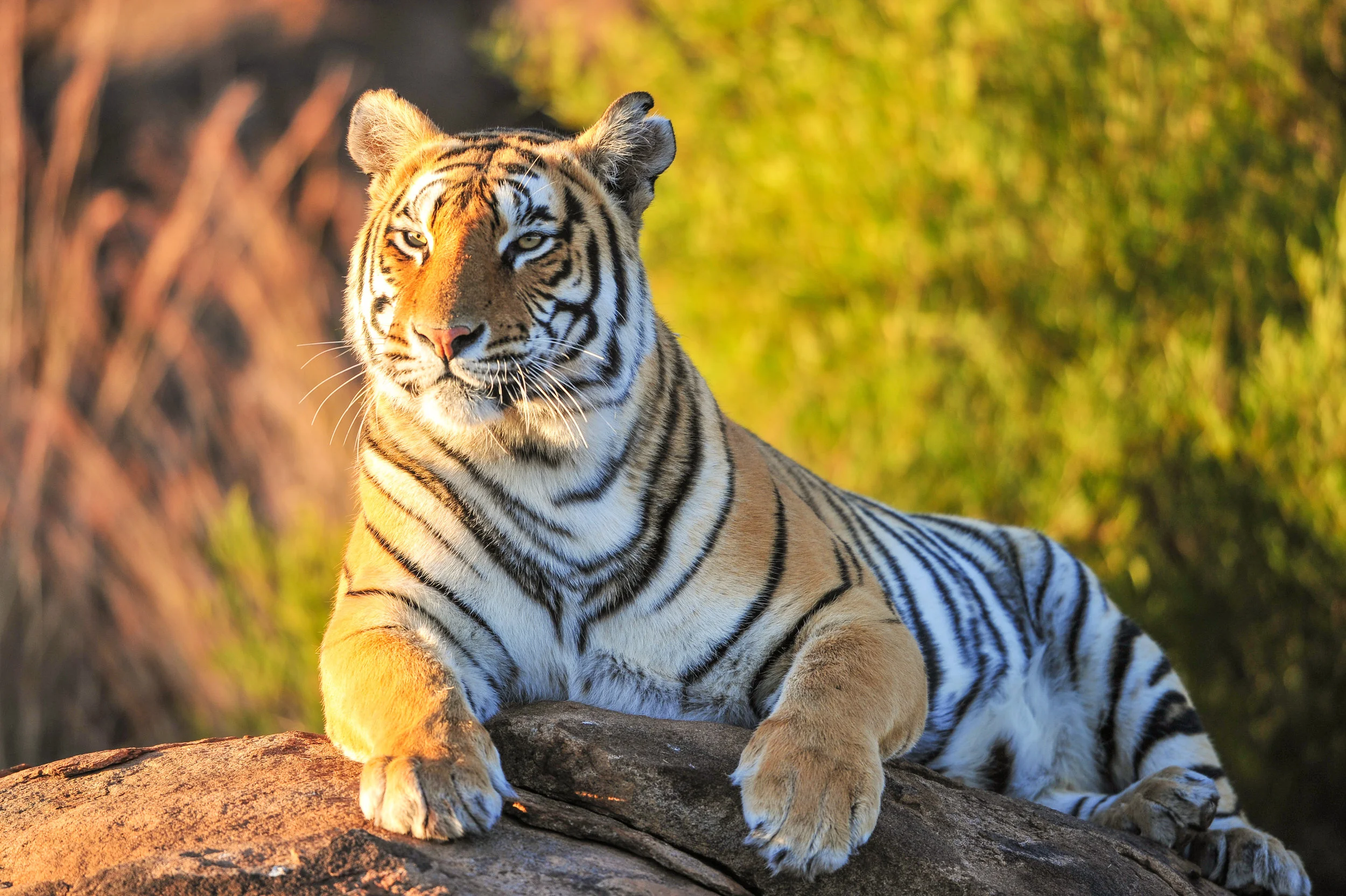Bengal Tiger
"Ghost of the Sunderbans" by Aaron Blaise (digital)
“I love painting big cats. One of my favorite big cats to portray are tigers. Their power…their markings…their soul are all a wonderful challenge to capture.”
Your purchase is helping Expedition Art and Saving Species purchase land in Sumatra! Learn more about the project.
Habitat
The Bengal tiger is found in India, with smaller populations found in Bangladesh, Nepal and China. They live in a wide range of habitats from tropical forests to tall grass jungles, encompassing coniferous woodlands, mangrove swamps and dry thorn forests.
Family Life
These animals are usually found solitary, except when they are courting, mating or raising their offspring. They remain at rest during the day and roam about at night in search of food. They are also very territorial, with males occupying a larger territory which overlaps that of several females with whom he will mate.
Lifespan
Tigers usually live eight to ten years in the wild. In captivity, tigers have been known to live up to 26 years, although a typical captive lifespan is 16 to 18 years. The oldest fossil remains of Bengal tigers are believed to be about are two million years old.
Hunting Habits/Diet
Mainly hunting wild pigs and deer, the tiger is also capable of taking prey much larger than itself, including small elephants and rhinos. Tigers prefer to hunt at night, when their prey are most active. They use a stealthy, silent approach, taking advantage of trees and bushes as cover so they are not sighted or heard by the prey. Typically, they kill by ambushing and throwing their prey off balance with their mass as they leap onto it.
Population
There are more than 2,500 left in the wild.
Fun Fact
The Bengal tiger is one of the largest of the big cats. It is the only cat with stripes, and no two tigers have the same stripe pattern.
Why are they Endangered?
Because the development of linear infrastructure (roads, railways, power and transmission lines, etc.) is on the rise in Asia, tiger populations become isolated in remaining fragments of wilderness and ultimately die out. As a result, tigers are unable to breed, hunt, find cover and establish their own territories. Also, the Bengal tiger’s natural prey species have declined in numbers due to over-hunting, which has caused them to turn to domestic livestock as a source of food, inevitably causing conflict with local farmers.
Status
Endangered


